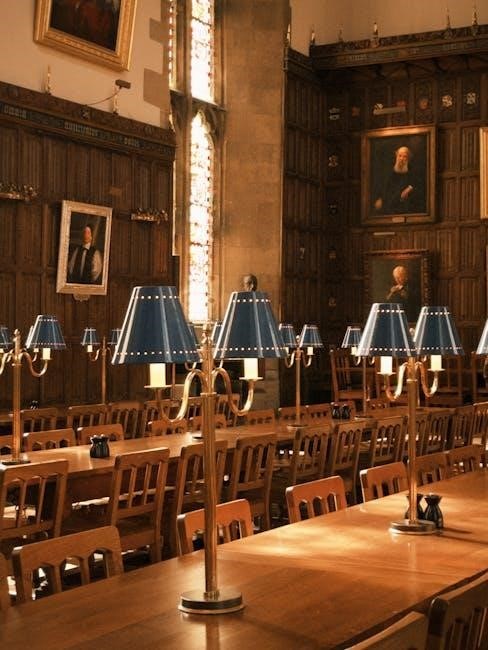The commercial checkride is the final step to obtaining a Commercial Pilot License (CPL), marking a significant milestone in aviation training and career advancement.
1.1 Overview of the Commercial Pilot License (CPL)
The Commercial Pilot License (CPL) allows pilots to fly for hire, requiring a minimum of 250 flight hours, including specific training and experience. It is a critical step for those pursuing a career in aviation, enabling them to work as professional pilots for airlines, charter services, or as flight instructors. The CPL demonstrates advanced skills and knowledge, marking a significant milestone in aviation training and career advancement.
1.2 Importance of Preparation for the Checkride
Thorough preparation is crucial for success in the commercial checkride. Understanding FAA regulations, practicing flight maneuvers, and reviewing aircraft systems ensures readiness. A well-prepared candidate demonstrates competence and confidence, key to passing both the oral and practical exams. Proper preparation also reduces anxiety, allowing pilots to perform at their best during the high-stakes evaluation.

Understanding the Commercial Checkride Requirements
The commercial checkride requires meeting specific eligibility criteria, including flight experience and FAA guidelines. Demonstrating aeronautical knowledge and practical flying skills is essential for certification.
2.1 Eligibility Criteria for the Commercial Checkride
To qualify for the commercial checkride, applicants must meet specific requirements: be at least 18 years old, hold a valid medical certificate, and complete a minimum of 250 flight hours, including 100 hours of pilot-in-command time and 50 hours of cross-country flight. Additionally, passing the FAA written exam and receiving instructor endorsement are mandatory steps.
2.2 FAA Regulations and Guidelines
Adherence to Federal Aviation Regulations (FARs) is critical for the commercial checkride. Pilots must demonstrate compliance with FAR Part 61 and Part 91, focusing on airmanship, safety, and decision-making. The FAA emphasizes proper documentation, such as a valid medical certificate and flight logbook, ensuring all requirements are met. Understanding these guidelines helps pilots navigate the checkride process efficiently and confidently.

Pre-Flight Preparation and Study Tips
Effective pre-flight preparation involves thorough review of FAR/AIM, aircraft systems, and weather briefings. Organized study schedules and practice exams enhance readiness for the written and practical tests.
3.1 Reviewing the FAA Airman Certification Standards (ACS)
Reviewing the FAA Airman Certification Standards (ACS) is critical for understanding the skills and knowledge required for the commercial checkride. The ACS outlines specific tasks, such as aircraft control and navigation, ensuring a comprehensive approach to preparation. Pilots should focus on integrating both theoretical knowledge and practical flying skills, as the ACS emphasizes task-specific aeronautical knowledge and risk management. Regular review of the ACS, alongside FAR/AIM, ensures readiness for both oral and flight tests.
3.2 Effective Study Strategies for the Written Exam
Effective study strategies for the written exam involve consistent practice with FAA-approved materials. Utilize online resources and practice tests to identify weak areas. Focus on high-weight topics like weather, regulations, and aircraft systems. Regular review of FAR/AIM and the ACS ensures comprehensive knowledge. Time management and understanding question formats are crucial for achieving a high score and building confidence for the exam.

The Commercial Checkride Process
The commercial checkride involves an oral exam and flight test. The oral exam covers regulations, weather, and aircraft performance, while the flight test evaluates maneuvers and navigation skills.
4.1 Oral Examination and Ground School Review
The oral exam evaluates your understanding of aviation regulations, weather interpretation, aircraft performance, and safety procedures. Reviewing ground school materials and practicing with mock interviews ensures preparedness. Examiners assess decision-making and knowledge depth, focusing on real-world scenarios and regulatory compliance. A thorough review of FAR/AIM and ACS standards is essential for success in this phase of the checkride process.
4.2 Flight Test Maneuvers and Procedures
The flight test involves demonstrating precise control and mastery of various maneuvers, such as steep turns, approaches, and landings. Examiners evaluate smoothness, adherence to procedures, and ability to maintain altitude and airspeed. Practice ensures consistency and readiness for all required tasks, showcasing your ability to operate safely and efficiently under different conditions.

Common Mistakes to Avoid During the Checkride
Avoid lack of aircraft familiarity, poor decision-making, and failure to manage nerves. Ensure clear communication, precise maneuvers, and adherence to procedures to demonstrate professionalism and competence.
5;1 Understanding Examiner Expectations
Examiners assess not only flying skills but also decision-making, situational awareness, and adherence to safety protocols. They expect clear communication, precise maneuver execution, and a calm demeanor. Demonstrating a thorough understanding of regulations and procedures is crucial. Anticipate scenarios where examiners may test limits, ensuring readiness to adapt and respond confidently. Preparation and professionalism are key to meeting their high standards and expectations during the checkride.
5.2 Managing Nerves and Staying Focused
Managing nerves during the checkride is essential for optimal performance. Practice deep breathing exercises to stay calm and maintain focus. Conducting mock checkrides helps build confidence and familiarity with the process. Stay present, prioritize safety, and trust your training. A positive mindset and structured pre-flight routine can significantly reduce anxiety, ensuring you remain composed and professional throughout the evaluation;

Aircraft-Specific Considerations
A thorough understanding of the aircraft’s performance, configurations, and handling characteristics is essential. Familiarize yourself with pre-flight inspections and system-specific procedures to ensure smooth operations during the checkride.
6.1 Familiarization with the Aircraft Type
Familiarization with the aircraft type involves understanding its unique performance characteristics, control responses, and system operations. Pilots must thoroughly review the aircraft’s flight manual, paying attention to specific handling techniques, speed ranges, and configuration requirements. This ensures safe and precise operation during the checkride, aligning with examiner expectations and aviation standards.
6.2 Configurations and Performance Characteristics
Understanding aircraft configurations, such as flaps and landing gear settings, is crucial for optimal performance. Pilots must also grasp the aircraft’s power settings, climb rates, and stall speeds. Proficiency in these areas ensures smooth execution of maneuvers and adheres to safety standards, demonstrating mastery during the checkride and enhancing overall flight safety and efficiency.

The Role of the Flight Instructor
The flight instructor plays a pivotal role in preparing students for the commercial checkride by providing personalized training, feedback, and guidance. They tailor lessons to address weaknesses, ensuring students meet FAA standards and are well-prepared for both the oral and practical exams. Their expertise and support are crucial for building confidence and competence, ultimately leading to successful checkride outcomes and a seamless transition to professional aviation careers.
7.1 Selecting the Right Instructor for Your Needs
Selecting the right flight instructor is critical for success. Look for instructors with extensive experience in commercial checkride preparation and familiarity with your aircraft type, such as the Cessna R182. They should have a track record of successful students and a teaching style that aligns with your learning preferences. Additionally, ensure they are knowledgeable about FAA regulations and can provide tailored feedback to address your specific needs. Recommendations from other pilots or flight schools can also guide your decision. A good instructor will not only teach but also mentor, helping you build confidence and competence for the checkride. Their expertise and support are invaluable in navigating the challenges of the commercial pilot training process. By choosing the right instructor, you set yourself up for a more effective and efficient learning experience. Researching their background, asking for referrals, and observing their teaching methods can help you make an informed decision. This ensures you receive the personalized attention and guidance necessary to excel during your training and beyond. Ultimately, the right instructor will help you achieve your goal of becoming a skilled and safe commercial pilot. Their insights and experience will be instrumental in preparing you for both the oral and practical components of the checkride, ensuring you are well-equipped to meet FAA standards and demonstrate your professionalism and readiness for a career in aviation. By investing time in finding the ideal instructor, you lay a strong foundation for your aviation career. Their guidance will help you overcome challenges, refine your skills, and stay focused on your objectives. A well-matched instructor-student relationship is key to a successful and enjoyable training experience. It is essential to find an instructor who understands your goals, adapts to your learning style, and provides constructive feedback. Their expertise will help you navigate the complexities of the commercial checkride, ensuring you are fully prepared and confident on exam day. By selecting the right instructor, you are investing in your future as a professional pilot. Their knowledge, experience, and dedication will be your greatest assets as you work toward earning your Commercial Pilot License and advancing your aviation career.
7.2 Building a Strong Instructor-Student Relationship
A strong instructor-student relationship is vital for effective training. Open communication, trust, and mutual respect form the foundation. Instructors should provide clear, constructive feedback, while students must actively engage and ask questions. Regular progress reviews and tailored lesson plans ensure alignment with goals. A supportive and encouraging environment fosters confidence and accelerates learning. Collaboration between instructor and student is key to mastering the skills and knowledge required for the commercial checkride.

Mental and Physical Preparation
Mental preparation involves developing a positive mindset, managing stress, and staying focused. Physical readiness ensures optimal performance through adequate rest, proper nutrition, and regular exercise.
8.1 Developing a Positive Mindset
Cultivating a positive mindset is crucial for checkride success. Focus on confidence building, self-affirmation, and embracing challenges as growth opportunities. Visualization techniques help reinforce successful outcomes, while mindfulness practices reduce anxiety. Recognize past achievements to bolster self-belief. A resilient attitude ensures composure under pressure, transforming nervous energy into focused performance during the examination and flight test.
8.2 Ensuring Physical Readiness
Physical readiness is essential for optimal performance during the checkride. Ensure adequate rest, balanced nutrition, and regular exercise to maintain energy levels. Stay hydrated and avoid fatigue-inducing habits. Proper sleep schedules and stress management techniques, such as deep breathing or meditation, help maintain focus. A healthy body supports mental clarity, enabling you to perform confidently and effectively during both the oral and flight portions of the exam.

Mock Checkride and Practice Exams
Mock checkrides and practice exams are crucial for preparation. They simulate real test conditions, helping you refine skills, manage time, and build confidence for the actual exam.
9.1 Benefits of Conducting a Mock Checkride
Mock checkrides simulate real exam conditions, helping you identify weaknesses and improve performance. They build confidence, familiarize you with test procedures, and reduce anxiety, ensuring you’re well-prepared for the actual checkride and its challenges.
9.2 Utilizing Online Resources and Practice Tests
Online resources and practice tests are invaluable for exam preparation. They provide interactive study tools, realistic question banks, and detailed explanations. Platforms like King Schools or Pilot Institute offer structured courses and mock exams, helping you assess readiness and identify weak areas. Regular practice builds familiarity with the exam format and boosts confidence, ensuring a polished performance during the actual checkride.

Post-Checkride Steps and Career Advancement
After passing the checkride, pilots receive their CPL, enabling professional flying careers. Building flight hours, networking, and advancing certifications like CFI or CFII further career opportunities.
10.1 What to Expect After Passing the Checkride
After passing the checkride, you’ll receive your Commercial Pilot License, unlocking opportunities for professional flying. Expect to gain practical experience, build flight hours, and network within the aviation industry. Employers may require additional certifications or training for specific roles. Staying updated on regulations and maintaining proficiency is crucial for long-term success in your aviation career.
10.2 Advancing Your Career as a Commercial Pilot
After obtaining your CPL, focus on gaining flight experience and building hours. Consider flying for regionals, instructing, or cargo operations to enhance your resume. Networking with industry professionals and staying updated on certifications can open doors to major airlines or legacy carriers. Maintain a strong safety record and adaptability to secure advanced roles in the competitive aviation industry.